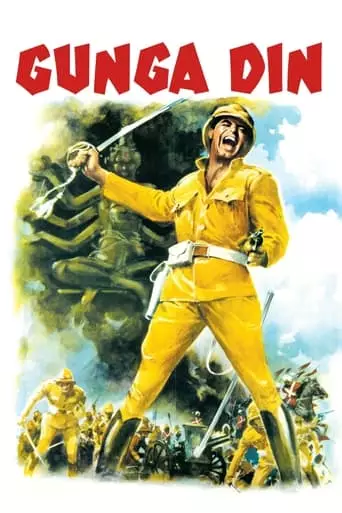
Gunga Din (1939) Watch Online Free
British army sergeants Ballantine, Cutter and MacChesney serve in India during the 1880s, along with their native water-bearer, Gunga Din. While completing a dangerous telegraph-repair mission, they unearth evidence of the suppressed Thuggee cult. When Gunga Din tells the sergeants about a secret temple made of gold, the fortune-hunting Cutter is captured by the Thuggees, and it’s up to his friends to rescue him.
“Gunga Din,” directed by George Stevens, is a classic adventure film inspired by Rudyard Kipling’s poem of the same name. Set in colonial India, the story follows three British soldiers—Sergeants MacChesney (Victor McLaglen), Cutter (Cary Grant), and Ballantine (Douglas Fairbanks Jr.)—as they confront the deadly Thuggee cult. Alongside them is Gunga Din (Sam Jaffe), a humble water-carrier who dreams of becoming a soldier.
The film’s narrative is action-packed, depicting the soldiers’ efforts to quell the Thuggee uprising. Gunga Din’s heroism becomes the emotional crux of the story when he sacrifices his life to alert the British forces to an impending attack, earning posthumous recognition as a hero. The movie ends with a poignant tribute to Gunga Din’s loyalty and courage.
“Gunga Din” combines thrilling action sequences with a deeper exploration of themes such as loyalty, camaraderie, and sacrifice. The film stands out for its portrayal of the bonds formed in adversity, particularly the relationship between the soldiers and Gunga Din.
However, the movie has been critiqued for its colonial perspective. While it celebrates the heroism of Gunga Din, a native Indian character, it does so within the framework of British imperialism. The portrayal of Indian characters and the glorification of colonial rule have sparked discussions about the film’s cultural sensitivity in modern times.
Upon its release, “Gunga Din” was praised for its grand adventure and technical achievements. It showcased groundbreaking cinematography and action sequences for its time, setting a standard for epic war films. However, its legacy is mixed due to its colonial undertones, which invite reflection on how historical narratives are framed.
After watching “Gunga Din,” you might feel a mix of admiration for the heroism depicted and contemplation about the cultural and historical context. The film’s action-packed narrative and emotional moments can leave you inspired, but its colonial perspective might also prompt critical reflection on the portrayal of history and cultural dynamics
